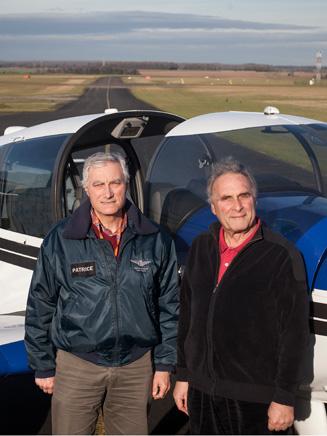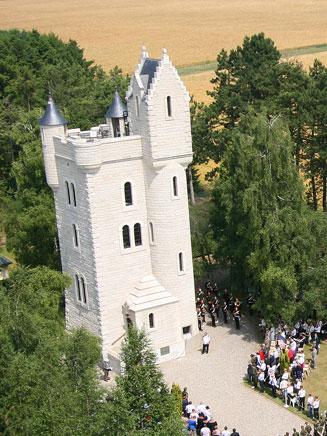You’ll also fly over the village of Fricourt, once home to Picardy aircraft industrialist Henry Potez, co-inventor of the Potez-Bloch propeller, which, after 1917, was used in most Allied World War I planes. Fricourt itself bears many remnants of the Great War, from a German military cemetery sheltering 17,027 war dead to trenches and craters that bear witness to the devastation that occurred here.
From Fricourt you’ll head to Albert, where your pilot will tell you about the hopes and superstitions surrounding the golden virgin on the basilica – the British believed that the war would only end when the statue had toppled.
At Boisselle, you’ll get a bird’s-eye view of the vast Lochnager crater (100 metres in diameter and 30 metres deep). Resembling a extinct volcano from above and caused by an explosion from mines painstakingly laid by Welsh tunnelers, it marked the exact beginning of the Battle of the Somme, which went on to be the bloodiest in British military history.
Flying over Pozières and the Ferme du Mouquet, which were defended by Australians, you’ll reach Thiepval – site of an immense memorial that together with the nearby Tour d’Ulster commemorates British and Irish forces. Thiepval’s pillars are poignantly engraved with the names of more than 72,200 missing British and South African servicemen.
Over Beaumont-Hamel, you’ll get unique views of the vast huge battlefield with its intact network of trenches and its craters denoting enemy lines. Next to it, the Newfoundland Memorial is testament to the loss of hundreds of Canadian lives in one of the most violent battles of the war – one that has left dramatic and lasting traces.
Practical, Information
Practical, Information




